Reality Check: Where does EU money go?
- Published
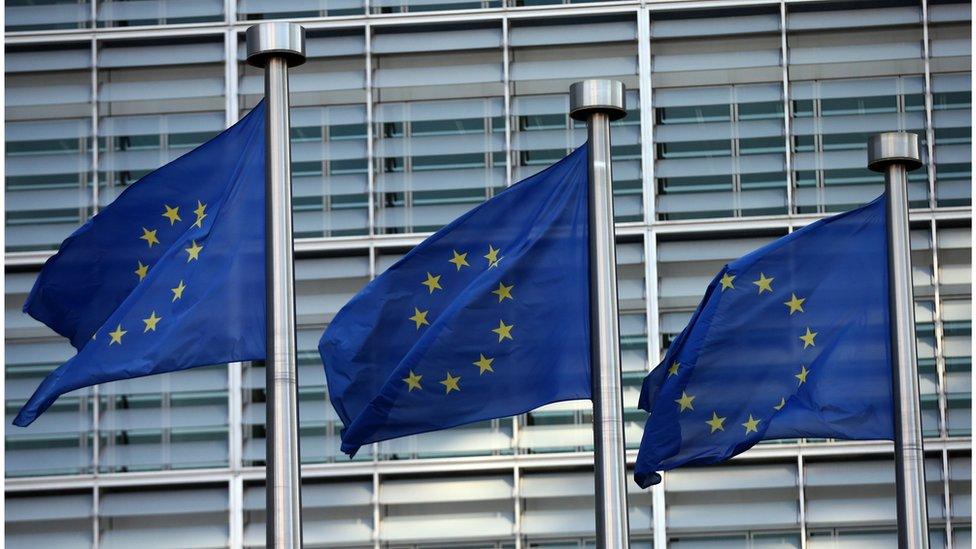
Many of the questions you ask Reality Check are about how much the European Union costs, and where the money goes.
Here's a guide to what happens to the funds the 28 member states contribute to the EU budget.
Every seven years, EU leaders agree a long-term plan for the EU budget, how big it should be and what the money should be spent on.
They all have to unanimously agree, so the negotiations usually take a long time.
The last seven-year plan was agreed in 2012, for the period 2014-20.
Eventually, the leaders decided to cut the EU budget, for the first time in the history of the organisation.
The representatives of EU's 28 governments and the members of the European Parliament, together with the European Commission, agree the precise details of the EU's budget every year.
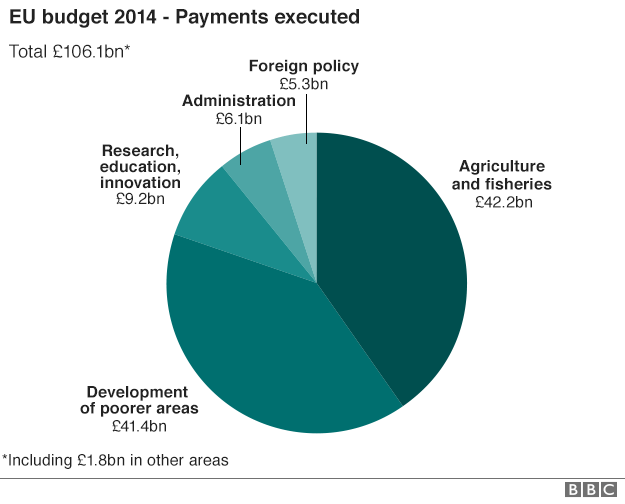
We examined the 2014 budget, to find out what the EU spends the money on.
That year, the EU spent €138.44bn (£106.13bn).
Of that, almost 80% went to two main areas:
agriculture and fisheries
development of poorer areas of the EU
Most of the rest was spent on three other areas:
improving the EU's growth through investing in research, innovation and education
the EU's foreign policy and international aid
the administrative costs of running the EU institutions

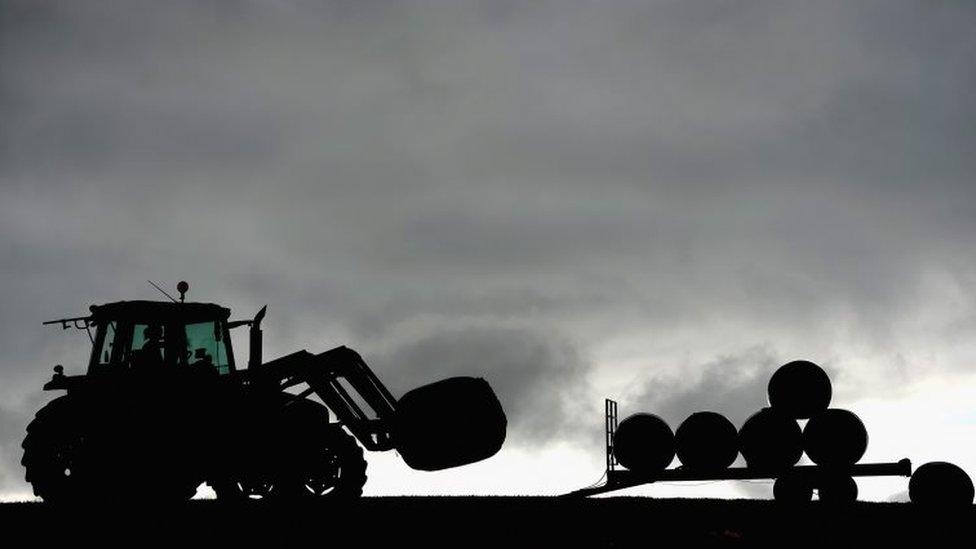
The biggest amount of EU money is spent on direct payments to farmers
Agriculture and fisheries
This received €55bn (£42.16bn), or 40% of the total.
The biggest amount of EU money is spent on direct payments to farmers - €43bn (£32.96bn) in 2014.
The EU sends this money back to member states, who distribute the money.
Anyone in the EU who has land used for agriculture can receive a payment.
The payments are aimed at ensuring the economic viability of the EU's eight million farmers and account for almost half of their income.
There is also a smaller fund, of just over €3bn (£2.3bn), for rural development, which covers various projects, from preserving ecosystems and helping low-carbon production to bringing medical services to people in remote rural areas.
Projects that support fishing, processing and marketing of fishery product get a very small proportion of the money - €90m (£68.99m) in 2014.
Top recipients of the EU money under this section were France, Spain, Germany, Italy, and Poland.
The UK received about 7% of the total agriculture and fisheries payments, ranking sixth among EU member states.


By far the biggest recipient of all development payments was Poland
Development of poorer areas
This received €54bn (£41.4bn), or 39% of the total.
The EU paid almost as much towards developing poorer countries and regions of the EU as it did for farming.
It spent €31bn (£23.76bn) on regional development, on projects across all underdeveloped regions of the EU.
It gave €13bn (£9.97bn) to projects in the 15 poorest EU countries:
Bulgaria
Croatia
Cyprus
Czech Republic
Estonia
Greece
Hungary
Latvia
Lithuania
Malta
Poland
Portugal
Romania
Slovakia
Slovenia
And €8bn (£6.13bn) was given to the remainder of the counties.
A large number of projects have been funded across the EU, including business start-ups, roads and railways, renewable energy projects, education and health programmes, charities, family projects and many others.
By far the biggest recipient of all development payments was Poland, followed by Hungary, Greece, Italy and Spain.
The UK ranked 11th and received about 3% of the EU's total.

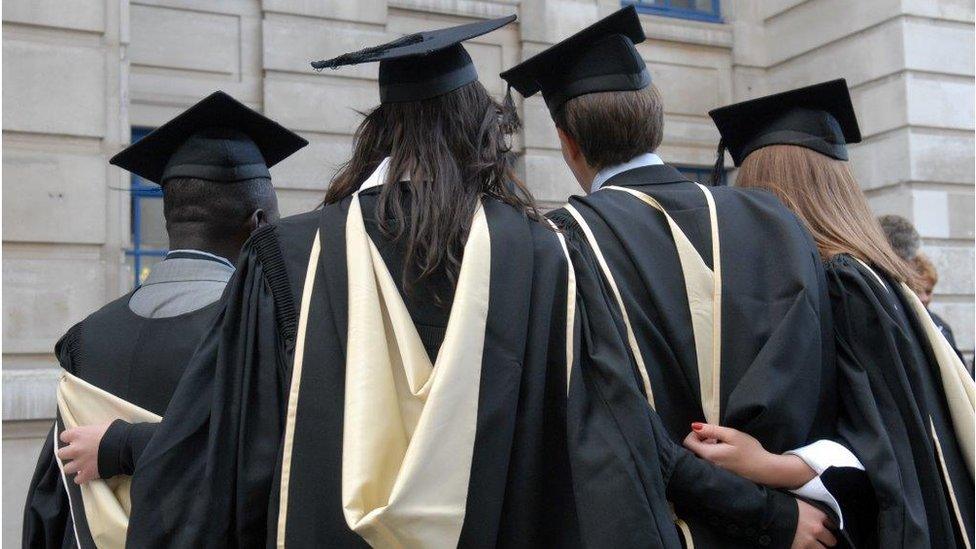
Research, education and innovation receives 9% of the total
Research, education, innovation
This received €12bn (£9.2bn), or 9% of the total.
This money is spent on research, education and innovation projects, with the overall aim of boosting the EU's competitiveness, economic growth and job creation.
This area of spending received a big increase in 2014 compared with the previous seven-year period.
Horizon2020, the EU's fund for research and innovation, and Erasmus+, the EU's programme for education, training, youth and sport, received most of the money, €6.3bn (£4.83bn) and €1.4bn (£1.07bn) respectively.
The third biggest recipient was the European Satellite Navigation Systems Agency, based in France.
Research projects covering stem cells, early cancer detection, the deep sea, robotics, remote planets, climate projections, air pollution in the cities, innovations in energy, transport and engineering all received funding.
The money for these projects is given on merit, so countries such as Germany and the UK benefit more from research and engineering grants than others.
The Horizon2020 brief by the European Commission published in 2015 shows that roughly 14% of Horizon2020 agreements have been signed with UK institutions and that the UK is the second highest recipient of financial contributions of this programme.

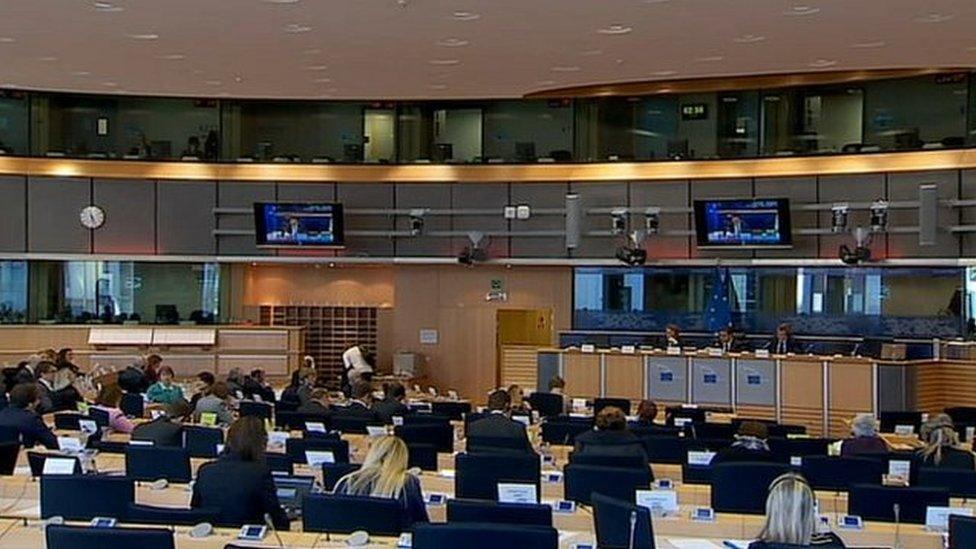
European Parliament administrative costs came to €1.7bn (£1.3bn).
Administration
This received €8bn (£6.13bn), or 6% of the total
The EU institution with the highest administrative cost, €3.4bn (£2.41bn), was the European Commission.
It employs 33,000 of the total EU's workforce of 55,000 people.
European Parliament administrative costs, with its interpretation and translation services for 24 official languages, came to €1.7bn (£1.3bn).
The cost of EU pensions was €1.5bn (£1.15bn).
The rest of the money for administration went to a number of other EU institutions, such as the European Council, the European Court of Justice, Court of Auditors and the EU's foreign affairs and diplomatic service.

Foreign policy
This received €7bn (£5.37bn), or 5% of the total.
The EU funds international development projects around the world, humanitarian aid and response to the world crises.
Of this €7bn (£5.37bn), €1.6bn (£1.23bn) was spent on projects in the EU's "neighbourhood" countries:
Algeria
Egypt
Israel
Palestinian territories
Jordan
Lebanon
Libya
Morocco
Tunisia
Armenia
Azerbaijan
Belarus
Georgia
Moldova
Ukraine
Syria was also on this list in the past, but the funding to Syria has been suspended.
The EU also spent €1.2bn (£0.92bn) on projects in seven EU candidate countries:
Turkey
Albania
Macedonia
Kosovo
Serbia
Montenegro
Bosnia-Hercegovina
The UK contribution to this area of EU spending counts towards the UK government's target of 0.7% of GDP on international development.

Other areas
Although all the other areas put together account for under 2% of the EU's spending, this provides funding for a number of projects.
Culture projects, food safety, audiovisual art, literary translation, building a network of industrial heritage sites in Europe are some of them.
The London-based European Medicines Agency (EMA), which approves medicines for all EU countries, is run by this funding too.



- Published22 February 2016
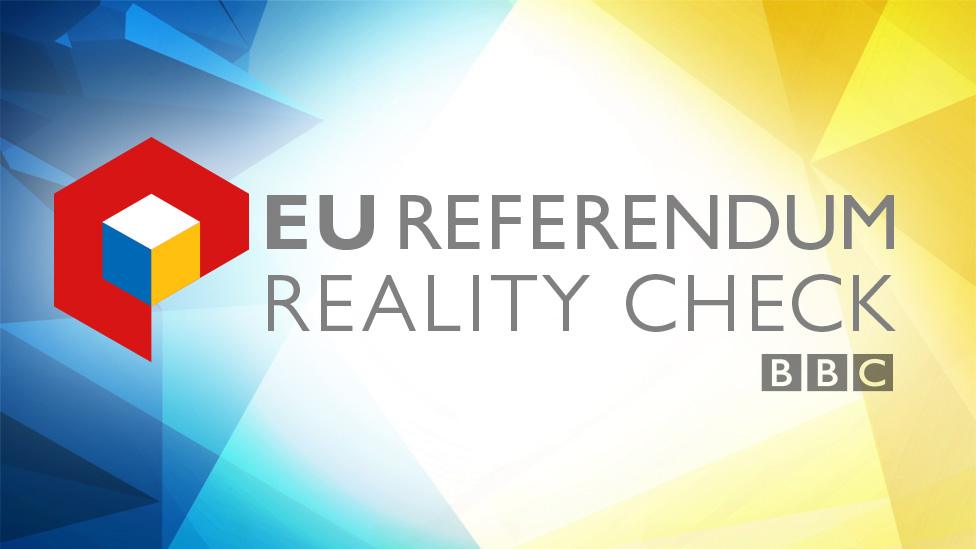
- Published12 May 2016
![Philip Davies saying: ...they [the EU] haven't had their accounts signed off for 20 years](https://ichef.bbci.co.uk/ace/standard/1024/cpsprodpb/B3F3/production/_89676064_davies_quote.gif)